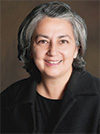In the field of post-mortem examination, experienced pathologists develop a sixth sense. I encountered that sixth sense while a first-year resident at Cornell University, in the middle of a winter morning. At 11 a.m. our lab received a phone call letting us know about seven dead heifers from a farm in upstate New York.
The farmers were trying to drive to the lab for a necropsy before an approaching snowstorm. The pathology team that would examine the cadavers as soon as they arrived included a senior pathologist, two residents and four senior veterinary students.
We were looking at a busy afternoon on the pathology floor. Besides the incoming heifers, we had three small animals and it was possible that a horse from the large animal teaching hospital would also need to be examined.
I was one of the residents at the time. I had just finished a light lunch and was eager to start my busy and challenging afternoon.
The dead cows arrived and we started working on them as soon as possible. The animals were 4-year-old Holstein heifers in good body condition.
Thanks to the harsh winter weather we were having at the time, the carcasses were well preserved and showed no sign of post-mortem deterioration or autolysis. It was cold enough to freeze anything left outside.
Each resident started working on a heifer with the help of two students. We placed the animal on the left side as we always do for consistency. In an efficient manner, we proceeded to open the abdominal, thoracic and pericardial cavities.
We went through the intestines, which showed a nice pink and soft appearance, as did the lungs. We discussed with the students the need to palpate the lungs to assess their consistency, as they will feel firm if there is pneumonia and firmness cannot be seen with the naked eye.
The heart was shiny and had a healthy brownish-red color. We cut the skull open to extract the brain. After the four cows were posted, we did not find anything and our postmortem exam seemed, so far, to be inconclusive.
It was kind of disheartening. We had a good history, seven animals with sudden death and a committed owner who drove through the snow just to submit the cases to us.
At the end of the day, we were cleaning the busy room while discussing the cases of the day with the senior pathologist.
I talked to him about my disappointment with this case because of the lack of conclusive findings. He turned to me and told me, straight to my face, “You are wrong. We found something.”
I asked him what we had found because I had not seen anything and wanted to learn what I had missed.
“What did you see? When did you see it? Where did you see it?” I asked. “How come I didn’t see it?”
In his very peculiar way, he said “I saw it because of my superior intelligence!”
I didn’t really know what he meant.
He further explained how his career experience showed that by finding nothing, we were excluding possible pneumonia cases, infectious diseases in the intestine or a heart lesion.
“Knowing what we weren’t looking for was moving us closer to a conclusion,” he said. During the procedure, he had asked us to save representative tissue samples, about the size of a fist, of the liver, kidney and fat, and to have them frozen. Perhaps they would be helpful.
The following day we met to review our reports, known as readouts, and to discuss the cases. During these morning meetings the residents were asked to think about the cases of the previous day, trying to relate the pathological findings with what may have happened in each case.
We engaged in a challenging discussion about our hypothesis to explain the deaths of the heifers. In this case, we really had no clue!
The history was reviewed: Seven cows from a herd of 100, sudden death with nothing found during the postmortem exam.
So that very same morning, after the readouts, the senior pathologist told us that we were going on a field trip to the actual farm.
We talked to the farmer and he showed us where the animals were found. We walked around a little bit. It was so very cold.
Then the senior pathologist found a worn-through cable on the electrical cord that powered the water heater. The animals were found dead about 25 to 30 feet from the tank.
We concluded that they were electrocuted and stumbled around for a little while before dropping dead. The farmer was pleased to have identified the cause and fixed it to prevent future deaths.
I was glad we went with the senior pathologist on this field trip and were there when he solved the case. I know now what the senior pathologist was trying to tell me about “superior intelligence.”
After more than 20 years of doing post-mortem examinations, I have seen that my own superior intelligence has aided me and my residents in helping many livestock owners solve many other challenging cases.






